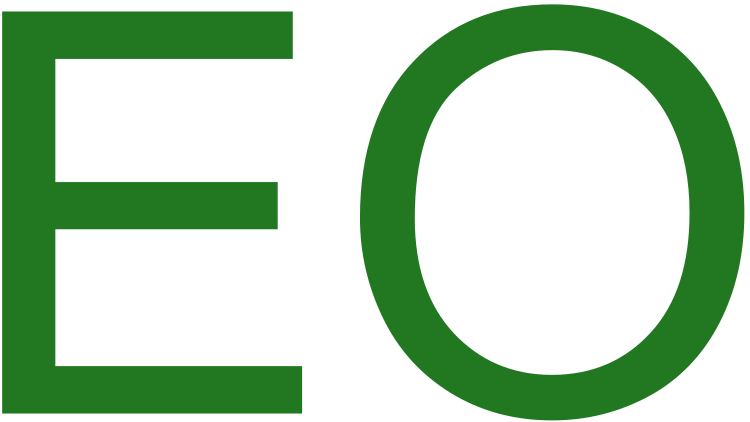 |
 |
 |

|
|
|
|
I'm in a restaurant. I read in the
menu: blin. Blin? Yes, blin. Just a blin. Of
course, I've heard about a blin. However I have
never tasted it. Have I ever eaten a blin? No,
probably not. Surely not. With no doubt I have
eaten no blin in my entire life. So, I don't
know what a blin is. So, I know only the word blin. So, I know only
the notion blin. Or maybe even a
part of this notion. Because I read blin and nothing is
happening. I hear with my internal ear several
phonemes assembled in a sound cluster causing no
image in my mind. Only some vague association. A
noodle? Something like a big dumpling? A patty?
A kind of pancake? Something stuffed with
something? ....... I will order it. I will get
it, I will taste it and I will know. Am I sure I
will ALREADY know? And if I went to the kitchen
and saw how a blin was being made? Maybe then I
would know more. Maybe I would go home and make
it by myself and then I would know even more.
And if I made a huge, enormously huge blin and
went inside it and saw it from inside? But then
I would be inside a real blin, not in a notion blin
. . . . . .
. . Why blin? Why not flin or bombol? What a boring old
question! Boring not because repeated
ceaselessly, but because still having no answer.
No satisfying answer . . . . . . . Such a huge
blin? Could be difficult. Could be impossible.
Where would I cook it? Must a blin be cooked or
fried or roasted or stewed? Or maybe pickled?
No, one doesn't pickle a blin. Something prompts
me pickling has nothing to do with a blin. What
does prompt? . . . . . . . . . Blin. Blin. Blin
. . . . . . . Dublin. Dęblin. Norblin . . . . .
. Do they make a blin in Dublin? And in Dęblin?
More probably in Dęblin than in Dublin, but who
knows, who knows . . . . . . . . Or maybe they
make a blin in Norblin? No, nothing has been
made in Norblin for years. But years ago they
could make huge iron blins. Or silver! Noble
blins! Noble blin! No blin! NO BLIN! . . . . . .
. ! ! ! ! ! ! ! . . . . . . It's an old factory
transformed into a museum . . . . . . . Imagine
you are in a hall called now A 1000 TONS HALL.
Imagine a 1000 ton blin. A 1000 ton iron blin! .
. . . . . Fantastic associations. Mad etymology.
Troublemaking sound relations . . . . . . . But
this is also a part of the notion blin . . . . . . . .
What is a notion? It is something spongy, very
soft, sticky, muddy, hands dipped in it like in
a lump of dough, fingers smeared, can't feel
anything . . . . . . . face smeared, eyes
smeared . . . . . . . blind blin . . . . . .
. . ears smeared and stuffed . . . . . . .
mouth full, you can't breath . . . . . . . . .
go out! go out! at once – get out – wash –
clean - . . . . . . . . And I will go out, I
will clean myself and being so clean what will
I know about greasy, soft, clay-like
Plasticine-like blin?
 Why Norblin? Because it is. I
know where it is and I know how I can get
into it. And I don't know where I can find a
blin – nor I know how I could get into it. It's also
important, that Norblin contains libro,
it means “a book”, while there are no books
in Dublin, Dęblin or
Lublin. If a book is hidden in
Norblin, there is nothing else to be done
but find it. Looking for it will mean
writing it. And if it is inside Norblin, it
should be written inside Norblin. Or on
Norblin. Literally – not metaphorically. On
the walls, floor, pillars. Certainly not
directly on them and not with spray or oil
colours since it is a monument ...... I
think of hanging on the walls transparent
films and writing on them. Then the text
will not cover images. Then the image will
take part in telling the story having the
same rights as the text ...... although I
will see the wall through the text, but the
text will all the time keep a certain
distance to the image – the distance real
and physical that can be measured in
centimetres or inches – it's important, it's
very important ....... I can write also on
wide stripes of paper which will hang down
from the wooden roof-truss thus forming
additional walls and barriers, additional
labyrinth, a structure that will either veil
or unveil, make passages, tunnels, will
guide the reading – well, should a reader be
guided? should I suggest certain directions?
or maybe I should let a reader move freely,
grope and err, look for the exit ....... I
will put different elements found on the
walls: a lever-hieroglyph, a
device-pictogram, half erased letters,
signs, letters-fetters... in my text. I will
be writing with colour chalks on the iron
floor – what I will write will vanish slowly
erased by the visitors' shoes, by the
readers' shoes, by the reading shoes – well,
it's interesting: this work will have to
disappear and it will disappear, nothing
will remain, maybe a few words somewhere in
a distant corner . . . . . . . . And so on.
Then such literalness will be the metaphor
of entering the notion, of getting into the
notion. So, I will also find myself in the
metaphor . . . . . . . . And then I will
have to leave this labyrinth. However, first
I will have to get into it. And write
everything in one go. Leave the space only
when everything is written, it means when I
get off the notion in which I have rushed .
. . . . . . . The unity of writer's drama
and main character's drama. The unity of
time, place and action of describing and
being described. The unity of the one who is
writing and the one who is being described.
So there will be neither the one who is
writing nor the one who is being described.
Who will be then? . . . . . . . . There will
be no description, no describing, since
writing itself will be action, drama,
adventure – and the place of action, of this
drama-adventure-event will be in fact my
mind – the mind of the
writing-and-described-one . . . . . . . then
the plan of this old factory will be the
plan of my mind . . . . . . a 3D model . . .
. . a mock-up . . . . . . .
Well, well, it's
getting intriguing.And it should be warm. What would it look
like? I enter Norblin for example on June
1st and I leave it for example on June 10th.
Norblin is transformed into Libro 2N. And
then? Then Libro 2N must be transformed into
Norblin. What will remain after cleaning?
Almost nothing. That's good. Maybe a
documentation: film, pictures, sketches. A
trace in memory.
2N. Neither – nor. 2 x nothing. Nowakowski x Nowakowski. 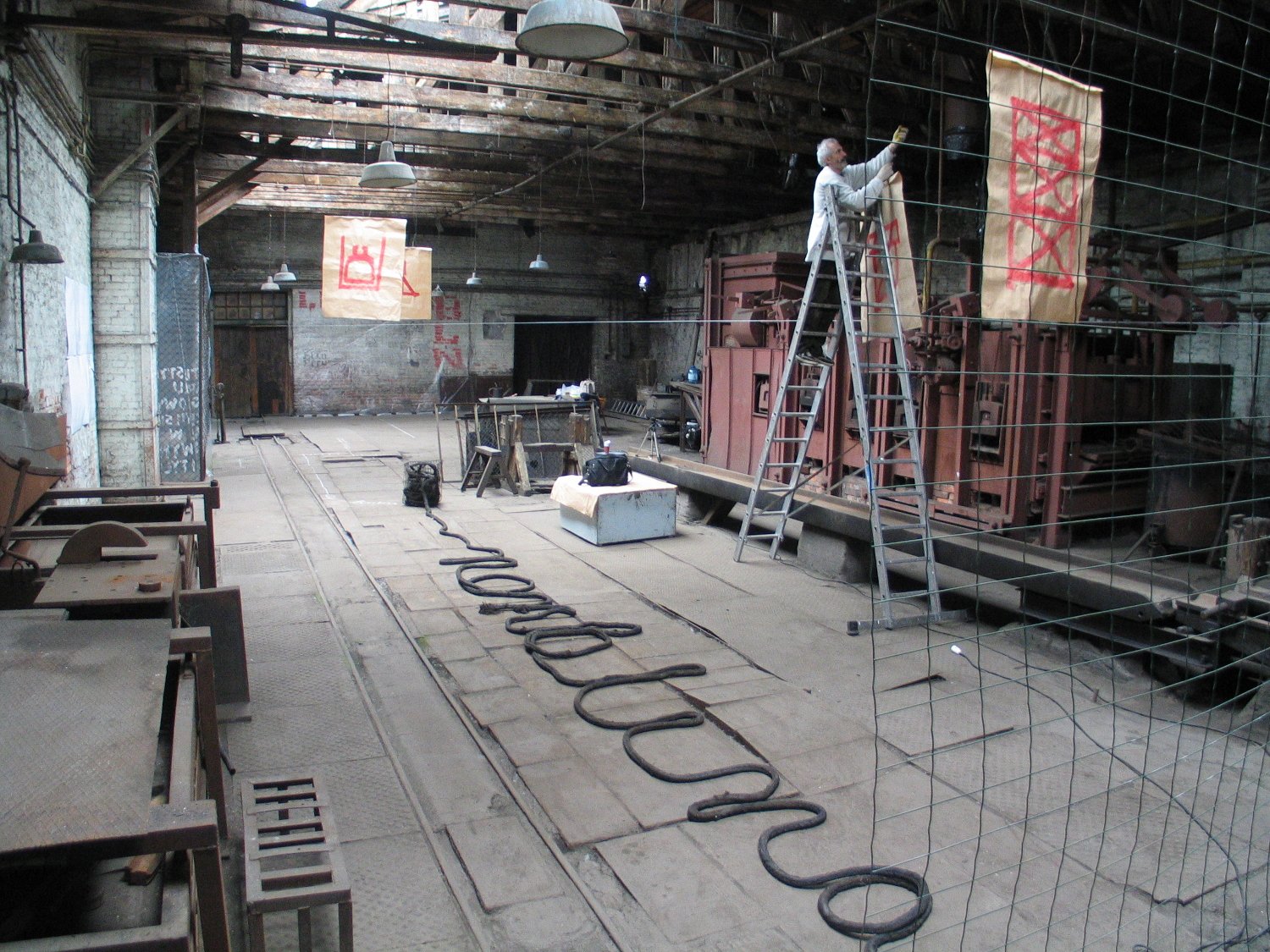 I spent in The
1000 Ton Hall the first decade of June
because I was to spend there just ten days.
The
first day I was suspicious and careful.
The second day I was horrified. The third day I wanted to run away. The fourth day I
discovered the reasons of my frustration
and weakness, of chaotic running from
one wall to another: it happened for the
first time that a book I was writing was
many times bigger than myself – until
then I had always been many times bigger
than a book – I could always easily
crumple a sheet of paper and throw it
away – now I could be crumpled and
thrown away and this is what nearly
happened -
The fifth and sixth day
I was at home to print the impossible
(or blinpossible) words on pages which
were to form a streak of light
across my head . . . . . . . . . .
The
seventh day I was calm, maybe little bit
dreamy. The eighth day I was
even delighted that what I was doing was
almost ideally needless.
The ninth day nothing
special happened, as usually, only the
idea of a slide multinovel came to my
mind, also absolutely needlessly.
The tenth day I
resigned enthusiastically. What I
created deserved to be labelled a
sketch. I would have to spent in
Norblin ten years to create something
that would deserve to be considered a
work completed to a large extent and
made meticulously. Certainly it is not
possible now. For various reasons.
Mainly because I prefer to spend next
ten years of my life somewhere else.
Whereas it is highly probably that in
next ten months a new book, again many
times smaller than myself, will be
completed, a book describing not only
those ten days that shook nothing and
nobody.
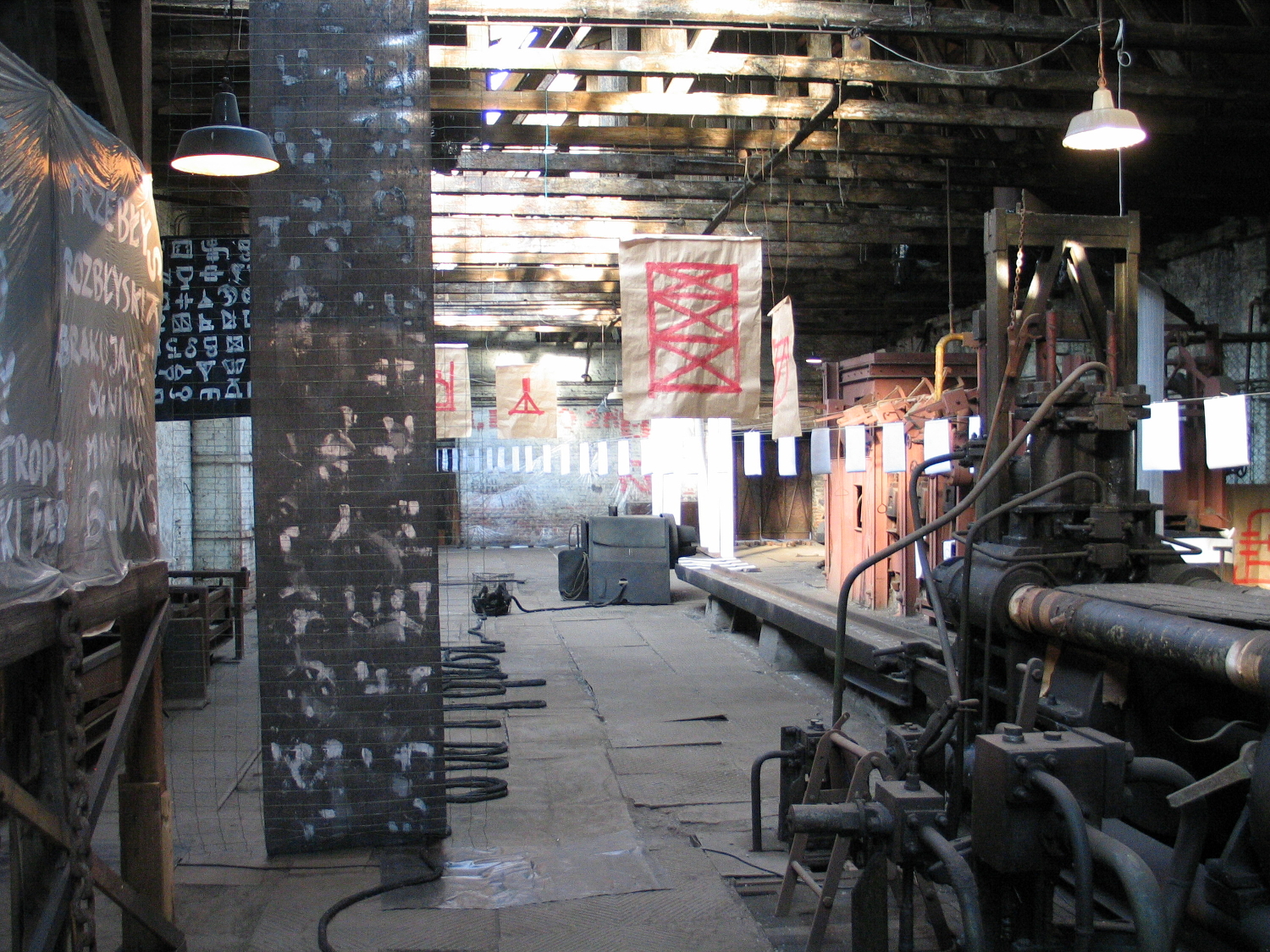 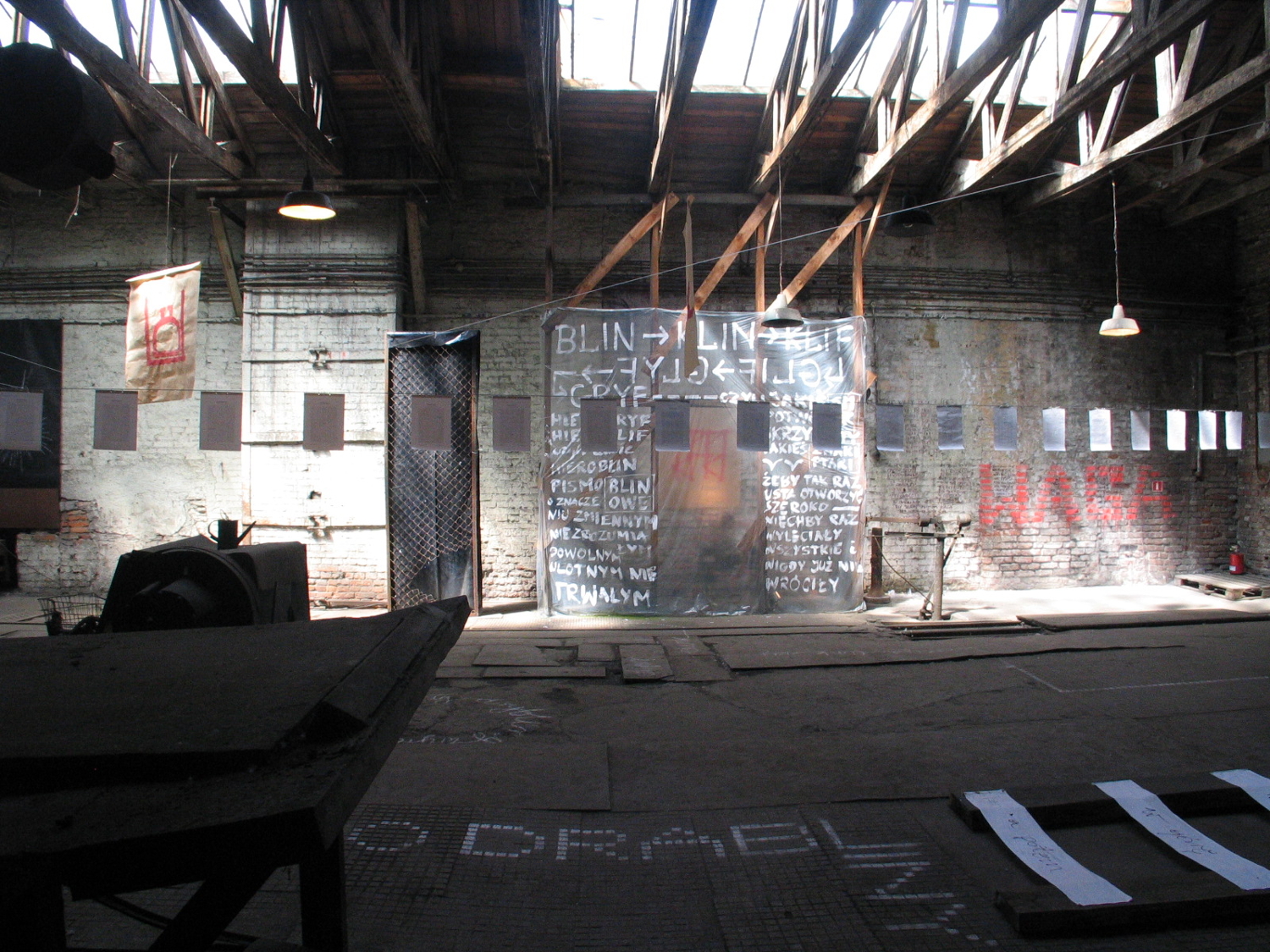 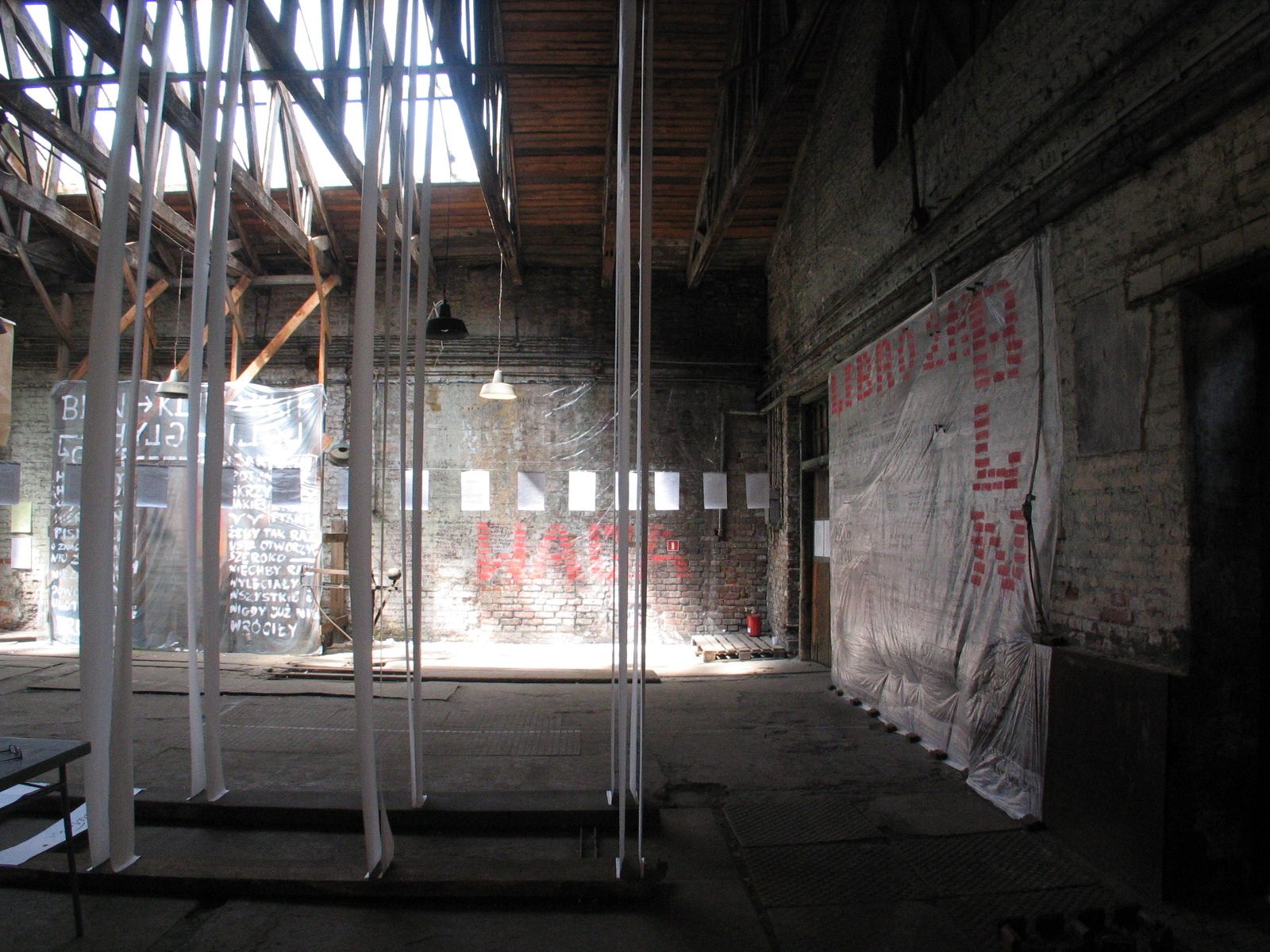 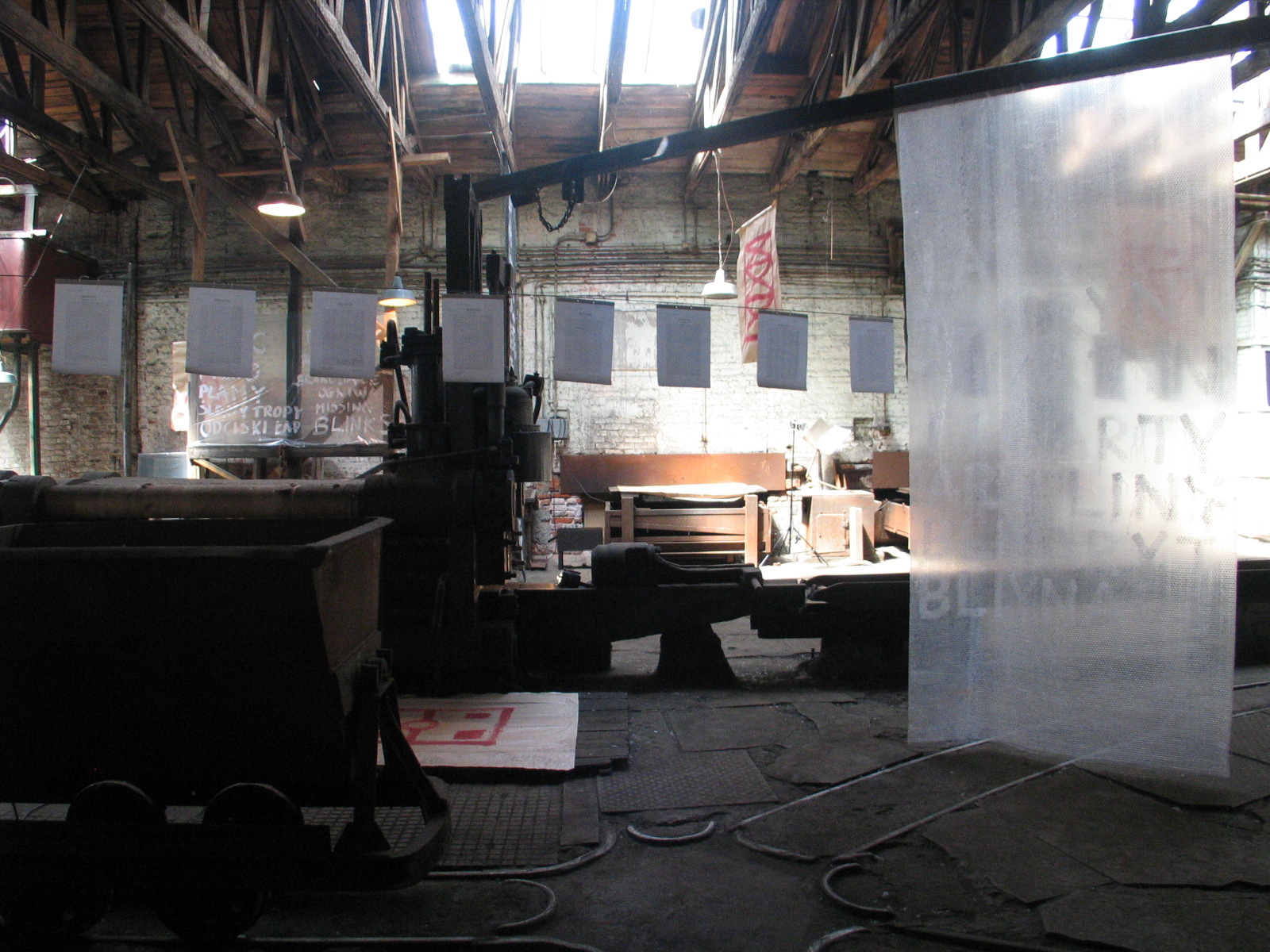 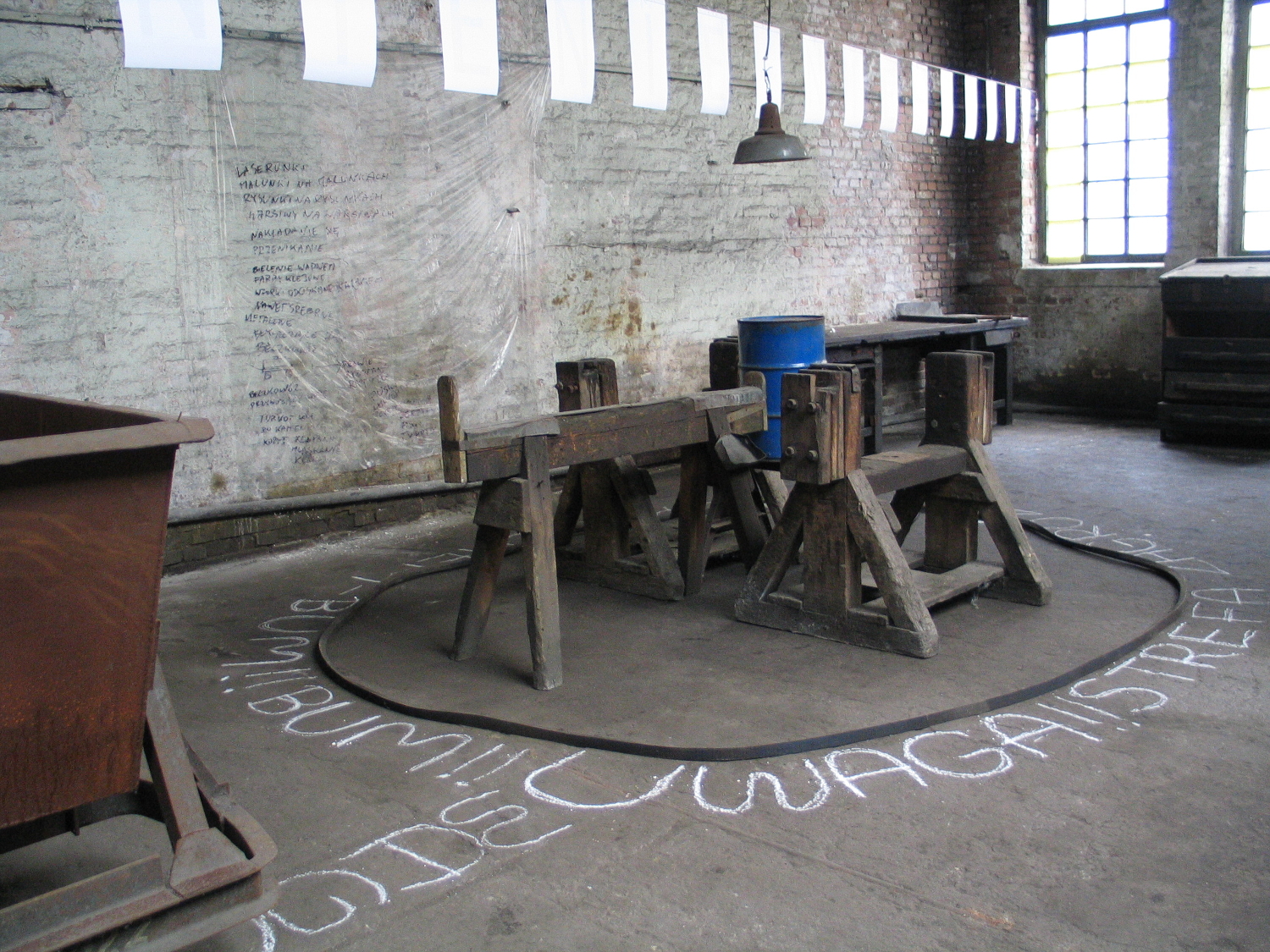 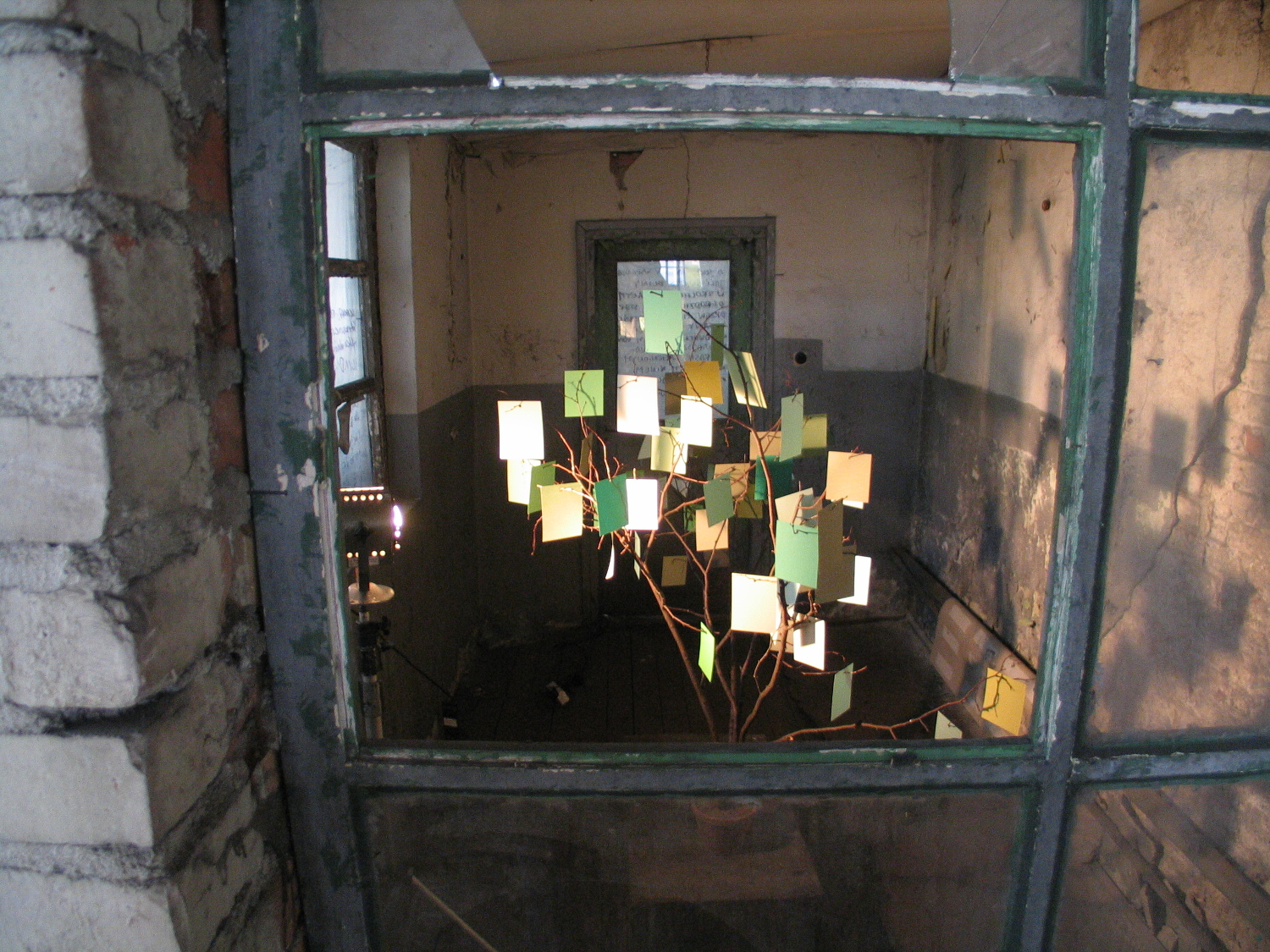 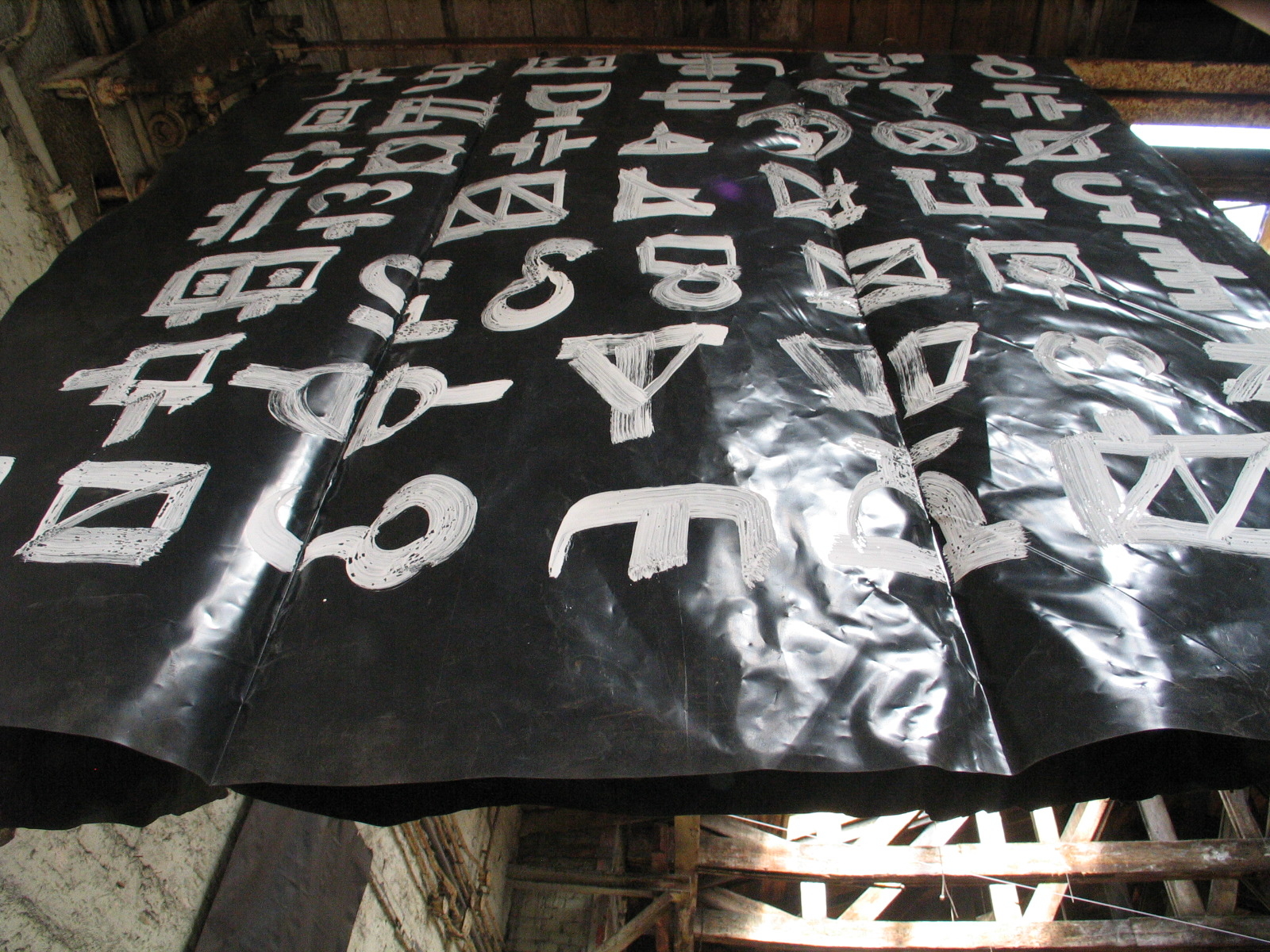 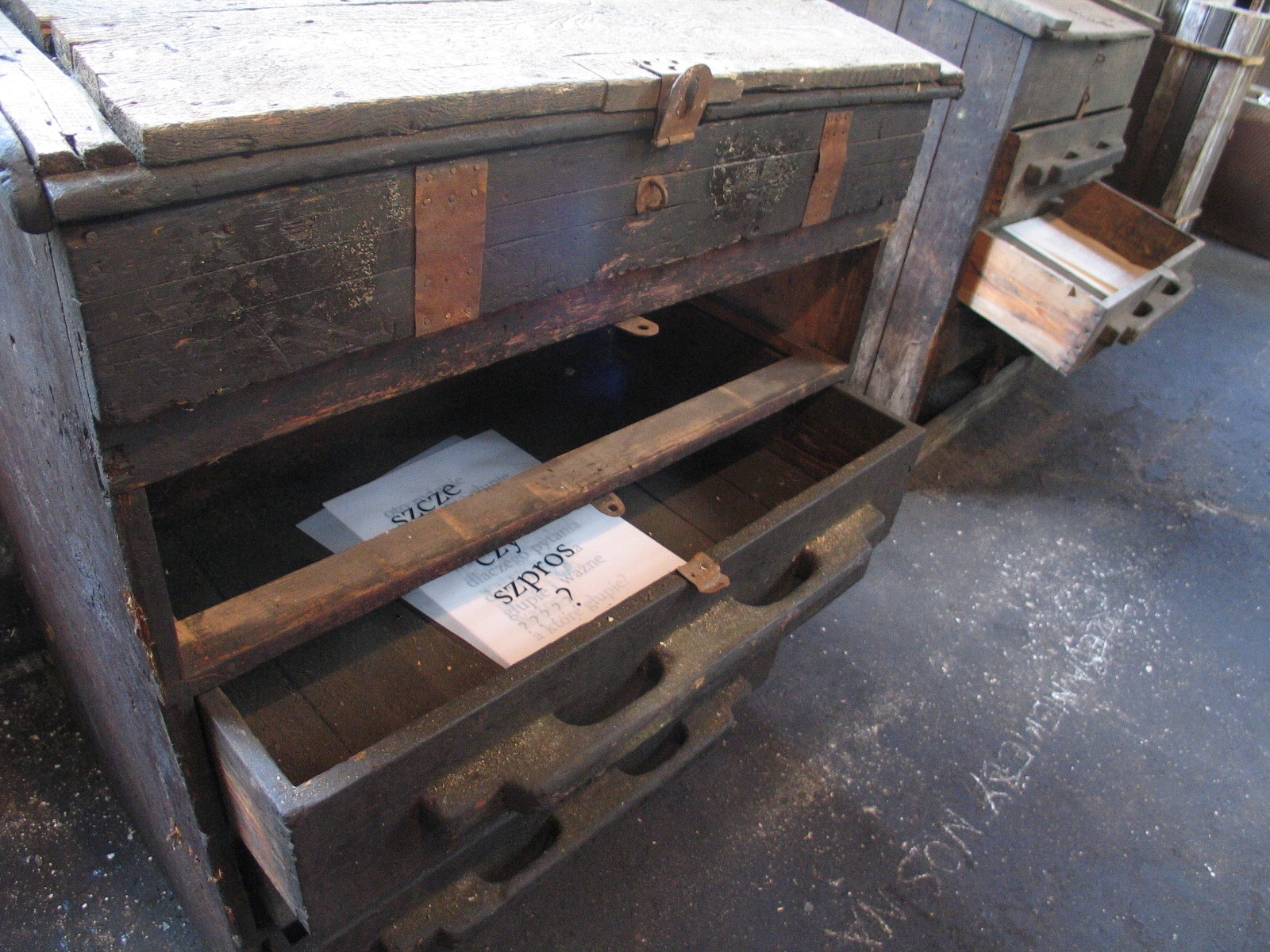 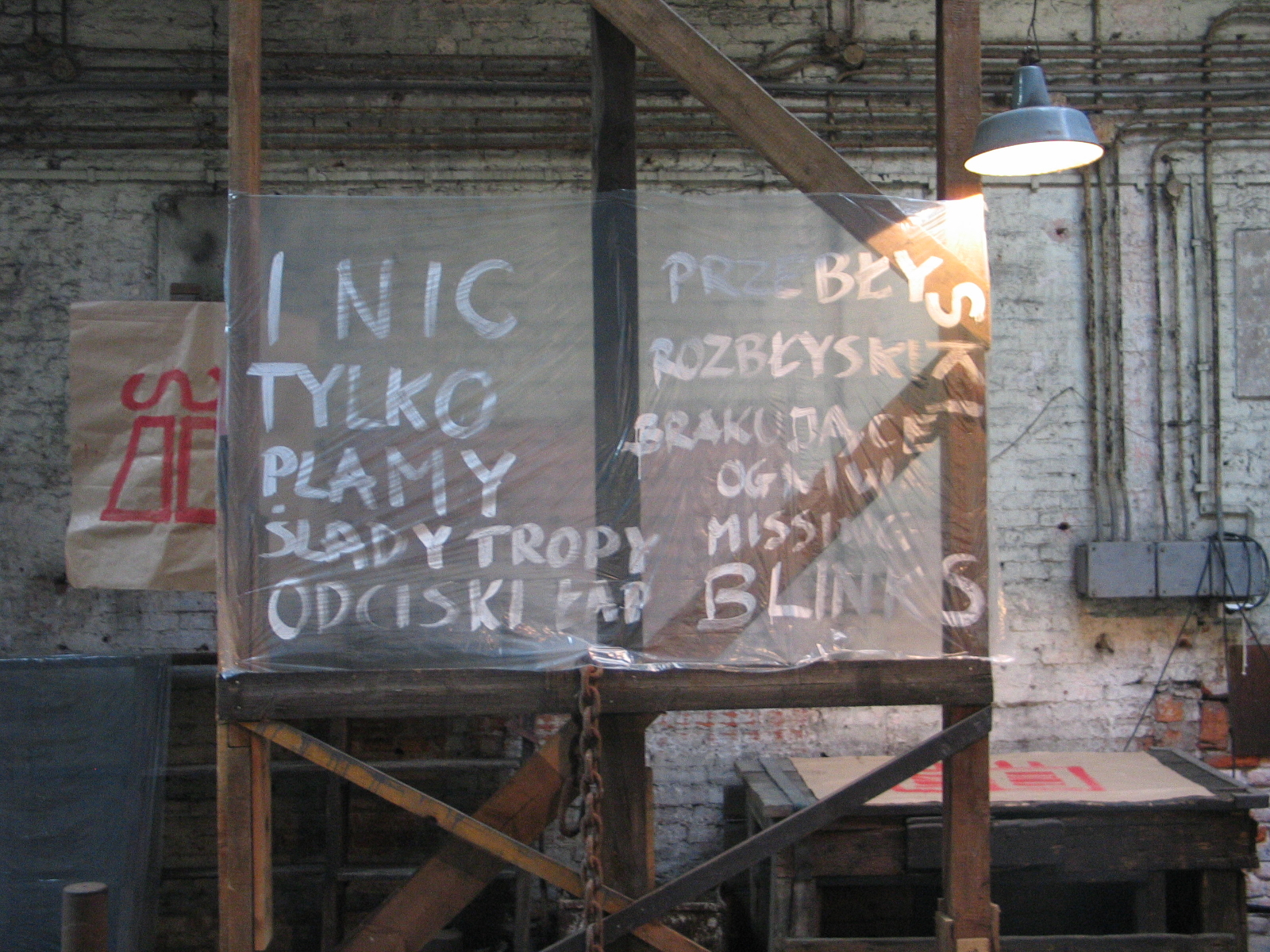 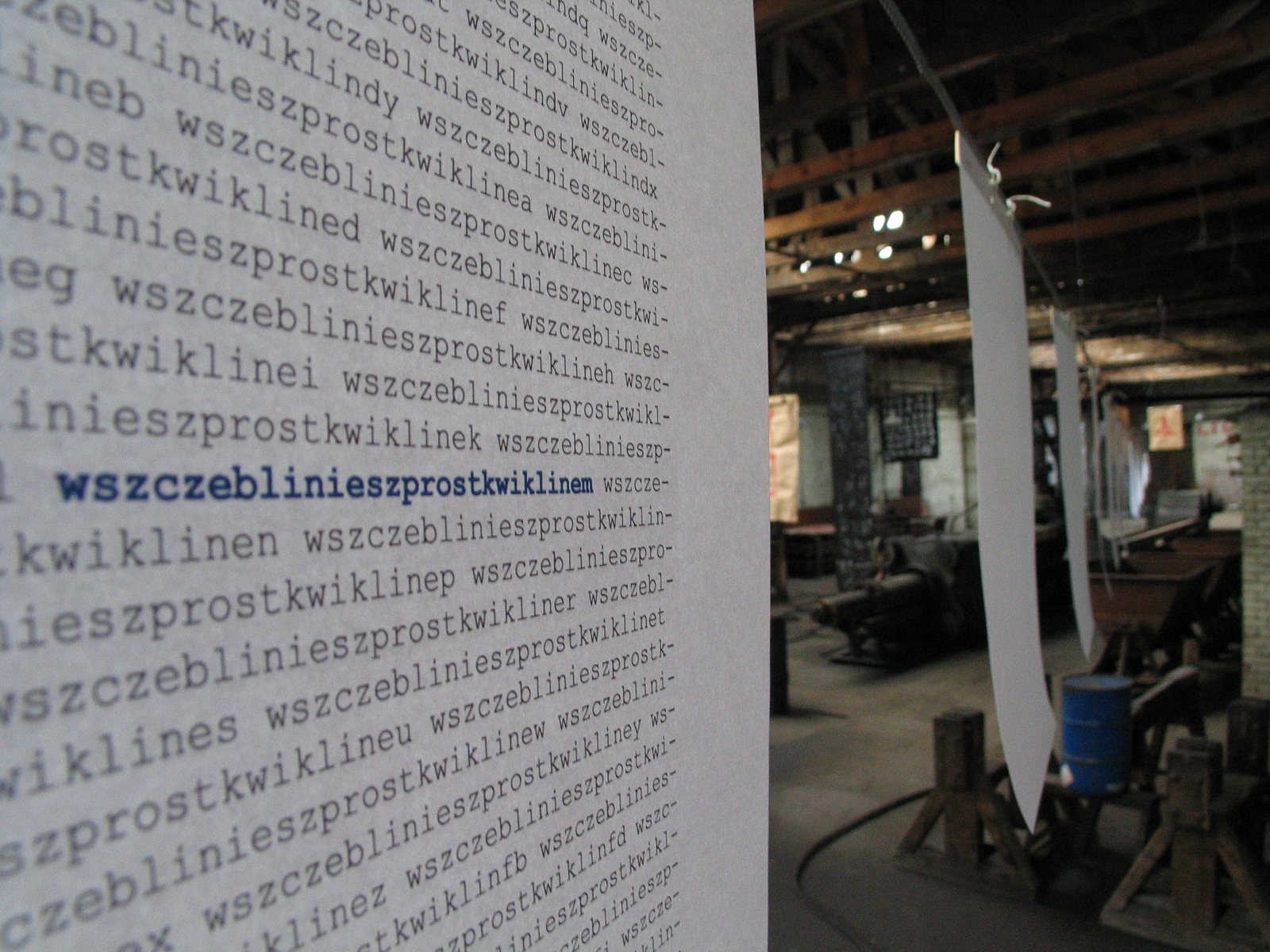 photo by Klara and Żuk Piwkowscy |

